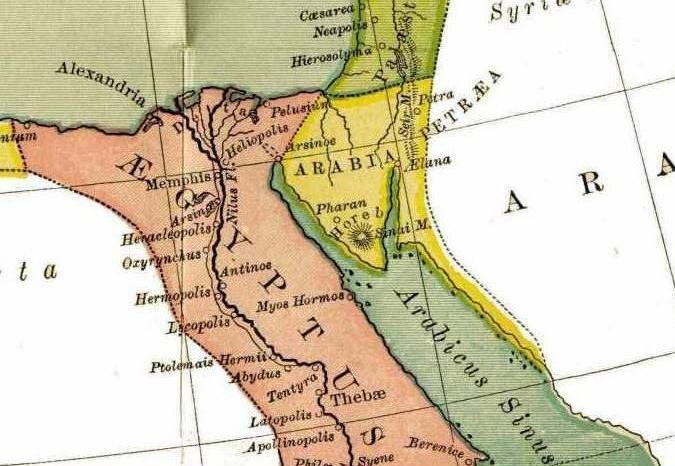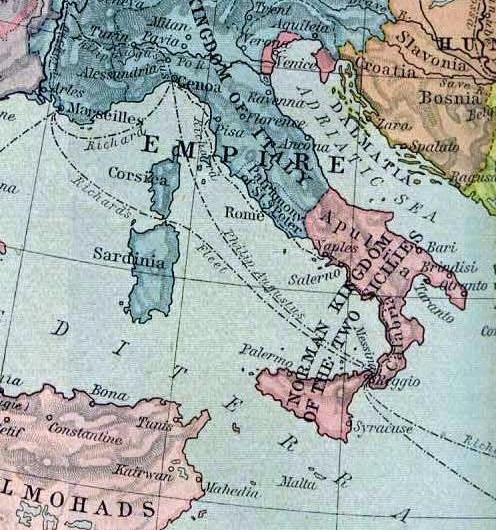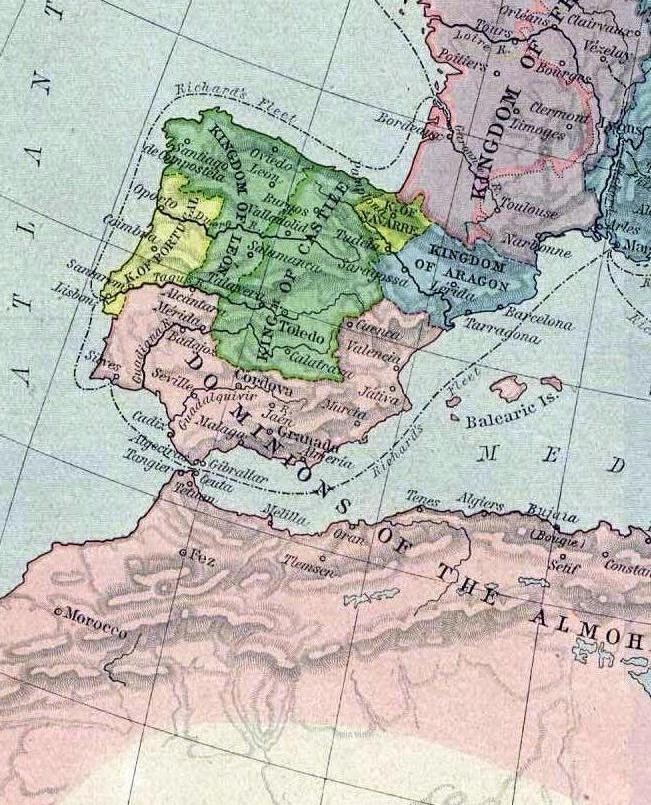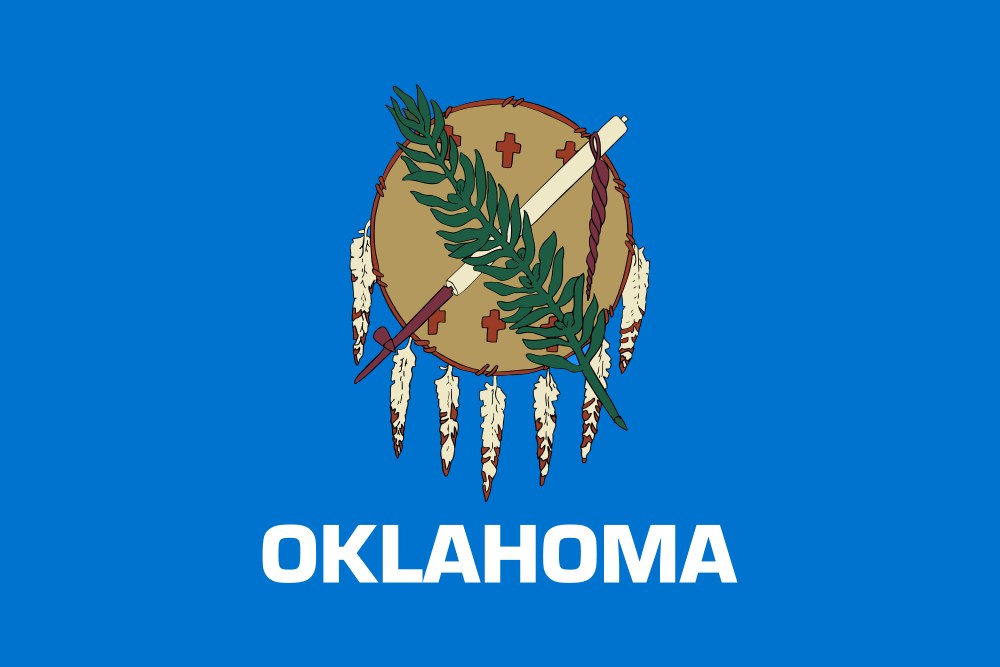Archive for May 2012

Above: Roman Egypt, 150 Common Era
MARTYRS AT ALEXANDRIA, EGYPT (202)
St. Plutarch of Alexandria was the brother of Heraclas of Alexandria (circa 180-247), also a saint on the Roman Catholic calendar. Yet I refuse to admit Heraclas to my Ecumenical Calendar of Saints’ Days and Holy Days. For my reason, keep reading, O reader. Both Heraclas and St. Plutarch came to Christ via Origen, who taught them at the great catechetical school of Alexandria. Heraclas became Origen’s assistant then successor as head of the school. Later,in 231, Heraclas succeeded St. Demetrius as Bishop of Alexandria. And Heraclas excommunicated Origen and forced him out of that city. The contents of the previous sentence explains why I do not call him St. Heraclas. I like Origen, who, like the rest of us, was right about a great deal and mistaken about other matters. And excommunicating him was the wrong thing to do.
St. Plutarch and Sts. Marcella and Potanominaena, mother and daughter students at the catechetical school, faced criminal charges of being Christian during the reign (193-211) of Roman Emperor Septimus Severus. Needless to say, all of them died. Also executed was St. Basilides, who led the daughter to her death yet, as the story goes, converted after a vision of the daughter. However the conversion came, it came. And he died because of it–a classic case of what the Roman Catholic catechism calls Baptism of Blood.
Sometimes I feel like a very repetitive person, but that is necessary on certain occasions. So here I go again. One cannot end a religion by martyring people. In fact, the blood of the martyrs does indeed water the church. I read about martyrs and wonder how I would have responded under their circumstances. I can speak only for myself just as only you, O reader, can speak for yourself.
KENNETH RANDOLPH TAYLOR
MAY 21, 2012 COMMON ERA
THE FEAST OF JOHN ELIOT, PURITAN MISSIONARY AMONG THE ALGONQIN
THE FEAST OF FREDERICK AUGUSTUS BENNETT, ANGLICAN BISHOP OF AOTEAROA
++++++++++++++++++++++++++++++++++++++++++++++++++++++++++++++++++++++
Almighty God, who gave your servants
Saints Plutarch, Marcella, Potanominaena, and Basilides of Alexandria
boldness to confess the Name of our Savior Jesus Christ before the rulers of this world,
and courage to die for this faith:
Grant that we may always be ready to give a reason for the hope that is in us,
and to suffer gladly for the sake of our Lord Jesus Christ;
who lives and reigns with you and the Holy Spirit,
one God, for ever and ever. Amen.
2 Esdras 2:42-48
Psalm 126 or 121
1 Peter 3:14-18, 22
Matthew 10:16-22
—Holy Women, Holy Men: Celebrating the Saints (2010), page 713

Above: The Flag of the Republic of Georgia
SAINT JOHN THE GEORGIAN, A.K.A. THE IBERIAN (DIED CIRCA 1002)
Abbot
His feast transferred from July 12
father of
SAINT EUTHYMIUS OF ATHOS (DIED 1028)
Abbot and Translator
His feast transferred from May 13
+++++++++++++++++++++++++++++++
SAINT GEORGE OF THE BLACK MOUNTAIN, A.K.A. SAINT GEORGE MTASINDELI OR SAINT GEORGE THE HAGIORITE (1014-1066)
Abbot and Translator
His feast = June 27
++++++++++++++++++++++++++++++++++++++++++++++++++++++++++
I like monks. I also admire translators. With those simple and unapologetic statements I begin.
St. John the Georgian (died circa 1002) was also known as St. John the Iberian. I have listed him primarily as “the Georgian” because he was Georgian, not Spanish or Portuguese. The Encyclopedia Americana (1962), Volume 14, page 615, uses “Iberia” to refer to the Iberian peninsula (Spain and Portugal) and to an
ancient region Asia. It now forms part of the Soviet republic of Georgia. The Iberians were defeated by Pompey and the region became part of the Roman Empire until after the time of Julian.
There was also a Georgian kingdom (extinct for over four centuries by the time St. John the Georgian was born) sometimes called Iberia. Yet, out of a desire for clarity, I refer to Georgia, not Iberia, beginning now.
St. John the Georgian was a nobleman and a military commander. He, with his wife’s permission, became a monk on Mt. Olympus in Bithynia. He brought his son St. Euthymius of Athos (died 1028) from Constantinople to Mt. Olympus. Their reputation for sanctity attracted so many followers that they had to leave just to have more solitude. So they relocated to Mt. Athos, where, with the help of General Thornikos, St. John’s brother, they founded Iviron Monastery for Georgians circa 980. St. John served as the first abbot, relinquishing the post circa 1002 in favor of his son. St. Euthymius served as abbot for fourteen years. He resigned so that he could devote himself full-time to translating the Bible and theological treatises by Church Fathers into Georgian. That was admirable work.
There were disturbances between Greek and Georgian monks on Mt. Athos. (Alas, even monks are not immune to the more unpleasant aspects of human nature.) Byzantine Emperor Constantine VIII (reigned 1025-1028) summoned St. Euthymius to Constantinople to explain these disturbances. The former abbot died en route of injuries he sustained after falling from a mule.
A monk who revised the Bible translation of St. Euthymius was St. George of the Black Mountain (1014-1066). He had lived in Syria and traveled widely in the Holy Land before serving as Abbot of Iviron Monastery. Later St. George became a monk on Black Mountain in Armenia, hence his surname Mtasmindeli, literally, “of the Black Mountain.” He also followed in the footsteps of St. Euthymius by translating theological treatises into Georgian.
Such work requires solitude. Preparing these posts (written longhand prior to typing online) requires solitude. These posts, of course, are nothing compared to major theological treatises or the Bible. So imagine, if you will, O reader, how much solitude those projects required. I stand in awe of these men who sought to glorify God, with whom they desired solitary communion. The Church would be intellectually bereft without such individuals.
KENNETH RANDOLPH TAYLOR
MAY 21, 2012 COMMON ERA
THE FEAST OF JOHN ELIOT, PURITAN MISSIONARY AMONG THE ALGONQIN
THE FEAST OF FREDERICK AUGUSTUS BENNETT, ANGLICAN BISHOP OF AOTEAROA
++++++++++++++++++++++++++++++++++++++++++++++++++++++++++++++++++++++
O God, by whose grace your servants
Saint John the Georgian,
Saint Euthymius of Athos, and
Saint George of the Black Mountain,
kindled with the flame of your love,
became bright and shining lights in your Church:
Grant that we also be aflame with the spirit of love and discipline,
and walk before you as children of light;
through Jesus Christ our Lord, who lives and reigns with you,
in the unity of the Holy Spirit, one God, now and for ever. Amen.
Acts 2:42-47a
Psalm 133 or 34:1-8 or 119:161-168
2 Corinthians 6:1-10
Matthew 6:24-33
—Holy Women, Holy Men: Celebrating the Saints (2010), page 723

Above: Italy in 1190 Common Era
SAINT WILLIAM OF VERCELLI (1085-1142)
Roman Catholic Hermit
His feast = June 25
friend of
SAINT JOHN OF MATERA (DIED 1139)
a.k.a. Saint John of Pulsano
Roman Catholic Abbot
His feast transferred from June 20
++++++++++++++++++++++++++++++++++++++++
I have detected a pattern common to many hermits: They seek solitude yet attract followers. It is good to seek to follow a holy person, a positive influence, for the polar opposite is to run with a bad crowd. But what about the holy hermit’s need for solitude? Today’s saints were such hermits.
St. John of Matera (died 1139) was born–where else?–at Matera, in Basilicata, in southern Italy. He joined an island monastery nearby, off the coast of Taranto, in the region of Apulia. His aloofness and austerity alienated other monks there, so he left for Calabria then for Sicily. Spending 2 1/2 years as a monk at Ginosa, St. John rebuilt a church. Unfortunately for the saint, he allegedly found a hidden treasure. This charge was enough for authorities to imprison him. Yet the saint broke out of jail and fled the area.
Next he encountered St. William of Vercelli (1085-1142). St. William was a nobleman from Vercelli, in the Piedmont region of northern Italy. His parents died when he was an infant, so relatives raised him. At age fourteen St. William made a pilgrimage to Compostela. Seven years later, at Melfi, in Basilicata, in southern Italy, he began to live as a hermit on Monte Solicoli. Once St. William began to make a pilgrimage to Jerusalem, but he abandoned it after robbers attacked him. He became a hermit at Monte Virgiliano instead. St. William attracted so many followers that he built a monastery there. And there St. John of Matera, a fugitive, joined the community. It was a strict community–too austere for many. So Sts. William and John, along with five followers, left for Monte Laceno in Apulia, in southern Italy. This community ended in fire. The hermitages destroyed, the saints went their separate ways.
St. John moved to Bari, where his effective preaching did not shield him from charges of heresy. So he returned to the community at Ginosa. Later he went to Monte Gargano, where he built a monastery and served as abbot.
St. William relocated to Monte Cogneto in Basilicata. Later he founded monasteries at Salerno, Conza, and Guglietto. While at Salerno St. William advised King Roger II of Sicily (reigned 1102-1154), whose empire ranged from southern Italy to northern Africa and who reformed the law and patronized science. St. William died at Guglietto.
Reading about lives of saints and organizing the material one has learned can be quite interesting. In this post alone I have had the opportunity to write about an empire and a jailbreak. Even better, I had a chance to ponder two men within whom still waters ran deeply. That was inspiring.
KENNETH RANDOLPH TAYLOR
MAY 20, 2012 COMMON ERA
THE SEVENTH SUNDAY OF EASTER, YEAR C
THE FEAST OF SAINT ALCUIN OF YORK, DEACON AND ABBOT
THE FEAST OF SAINT HELENA, MOTHER OF EMPEROR CONSTANTINE I
+++++++++++++++++++++++++++++++++++++++++++++++++++++++++++++++
O God, whose blessed Son became poor that we through his poverty might be rich:
Deliver us from an inordinate love of this world,
that we, inspired by the devotion of your servants
Saints William of Vercelli and John of Matera,
may serve you with singleness of heart,
and attain to the riches of the age to come;
through Jesus Christ our Lord,
who lives and reigns with you,
in the unity of the Holy Spirit,
one God, now and for ever. Amen.
Song of Songs 8:6-7
Psalm 34
Philippians 3:7-15
Luke 12:33-37 or 9:57-62
—Holy Women, Holy Men: Celebrating the Saints (2010), page 722

Above: The Balkans in the Roman Empire, 395 Common Era
SAINT NICETAS OF REMESIANA (CIRCA 335-CIRCA 414)
Roman Catholic Bishop
It is easy to take some things, especially old ones–for granted. They have always existed, right? Wrong! They were new once, and somebody originated them. With that introductory thought I turn to St. Nicetas of Remesiana (circa 335-circa 414). He was Bishop of Remesiana in Dacia, in present-day Serbia, and a successful missionary. The saint also wrote dissertations on the Trinity (he rejected Arianism), liturgical singing, and the creed. In his writings we have the earliest known use of the term “the communion of saints.” And he might have composed the great Te Deum Laudamus. So, with great enthusiasm (understated enthusiasm, given my sedate ways), I add St. Nicetas to my Ecumenical Calendar of Saints’ Days and Holy Days, where he joins his good friend, St. Paulinus of Nola.
KENNETH RANDOLPH TAYLOR
MAY 20, 2012 COMMON ERA
THE SEVENTH SUNDAY OF EASTER, YEAR C
THE FEAST OF SAINT ALCUIN OF YORK, DEACON AND ABBOT
THE FEAST OF SAINT HELENA, MOTHER OF EMPEROR CONSTANTINE I
+++++++++++++++++++++++++++++++++++++++++++++++++++++++++++++++
O Almighty God, you gave to your servant
Saint Nicetas of Remesiana
special gifts of grace to understand teach the truch
as it is in Christ Jesus:
Grant that by this teaching we may know you,
the one true God,
and Jesus Christ, whom you have sent;
who lives and reigns with you and the Holy Spirit,
one god, for ever and ever. Amen.
Proverbs 3:1-7
Psalm 119:89-96
1 Corinthians 3:5-11
Matthew 13:47-52
—Holy Women, Holy Men: Celebrating the Saints (2010), page 721

Above: The Flag of England
SAINT JOHN JONES (DIED JULY 12, 1598)
Roman Catholic Priest and Martyr
His feast transferred from July 12
+++++++++++++++++++++++++
SAINT JOHN RIGBY (CIRCA 1570-1600)
Roman Catholic Martyr
His feast = June 21
++++++++++++++++++++++++++
I could make my usual (for British martyrs) statement about freedom of religion and the need for governments to refrain from labeling a certain religious affiliation as treasonous, but I will move directly to telling the story of two saints.
St. John Jones (died 1598), a Welsh Roman Catholic, became a Franciscan in 1559. He made his vows in France and worked in Rome before undertaking his English mission in 1592. Jones served as the Franciscan Minister Provincial in England before authorities arrested him in 1596. Richard Topcliffe, the priest hunter with at best a casual relationship with facts, lied, saying that Jones had said a home Mass for two Catholics who, at the time , were in prison. So Jones could not have been in their company at their home, could he? But why let objective reality prevent one from arresting, torturing, and incarcerating someone? Jones was never a legally free man again. Authorities executed him by hanging, drawing, and quartering on July 12, 1598. Two Catholics who retrieved his dismembered remains from poles received long prison terms.
Before Jones died he helped St. John Rigby (circa 1570-1600) return to the Roman Catholic Church. Rigby worked in an Anglican household and attended Anglican services despite his Roman Catholic background. Then he reverted to Roman Catholicism and refused to deny this fact. So he met the same fate as did Jones on June 21, 1600.
These examples testify convincingly to the faith for which these men died and to the sin of killing people over theological disagreements. Their executions were legal–they were not crimes–but they were immoral.
KENNETH RANDOLPH TAYLOR
MAY 20, 2012 COMMON ERA
THE SEVENTH SUNDAY OF EASTER, YEAR C
THE FEAST OF SAINT ALCUIN OF YORK, DEACON AND ABBOT
THE FEAST OF SAINT HELENA, MOTHER OF EMPEROR CONSTANTINE I
+++++++++++++++++++++++++++++++++++++++++++++++++++++++++++++++
Almighty God, by whose grace and power your holy martyrs
Saints John Jones and John Rigby
triumphed over suffering and were faithful even to death:
Grant us, who now remember them in thanksgiving,
to be so faithful in our witness to you in this world,
that we may receive with them the crown of life;
through Jesus Christ our Lord,
who lives and reigns with you and the Holy Spirit,
one God, for ever and ever. Amen.
Sirach (Ecclesiasticus) 51:1-12
Psalm 116 or 116:1-8
Revelation 7:13-17
Luke 12:2-12
—Holy Women, Holy Men: Celebrating the Saints (2010), page 714

Above: AIDS Ribbon
Image Source = Gary van der Merwe
SAINT ALOYSIUS GONZAGA (MARCH 9, 1568-JUNE 21, 1591)
Jesuit
A saints book published in 2007 lists saints according to causes. For the cause “AIDS Patients and Caregivers” one finds the name of this saint. It is an appropriate choice.
St. Aloysius Gonzaga (1568-1591) came from an elite family of warlords. His father was Marquis Ferrante of Castiglione. The expectation was that the saint would marry, have children, and pursue the family business. Yet the young saint knew better. He spent years trying to convince his father that he had a different vocation before he succeeded. During that liminal time Gonzaga practiced religious austeries and instructed some of the poor people of Castiglione in the faith.
The saint’s six years as a Jesuit were challenging for him. His persistent health problems slowed his progress and studies, begun and Milan after he entered the order at Rome in 1585. Finally, in 1587, the saint made his vows. The order sent him to work as a nurse at a hospital in Rome. He had to overcome his revulsion at wounds and diseases to practice compassion. Plague struck Rome in 1591. The saint contracted the disease by treating patients. Thus he died, aged twenty-three years, on June 21.
May we honor all who endanger themselves to care for others. And may we do the same for all who have placed themselves in peril for the sake of others.
KENNETH RANDOLPH TAYLOR
MAY 20, 2012 COMMON ERA
THE SEVENTH SUNDAY OF EASTER, YEAR C
THE FEAST OF SAINT ALCUIN OF YORK, DEACON AND ABBOT
THE FEAST OF SAINT HELENA, MOTHER OF EMPEROR CONSTANTINE I
+++++++++++++++++++++++++++++++++++++++++++++++++++++++++++++++
O God, by whose grace your servant Saint Aloysius Gonzaga,
kindled with the flame of your love, became a burning and a shining light in your Church:
Grant that we also may be aflame with the spirit of love and discipline, and walk before you as children of light;
through Jesus Christ, our Lord, who lives and reigns with you,
in the unity of the Holy Spirit, one God, now and for ever. Amen.
Acts 2:42-47a
Psalm 133 or 34:1-8 or 119:161-168
2 Corinthians 6:1-10
Matthew 6:24-33
—Holy Women, Holy Men: Celebrating the Saints (2010), page 723

Above: Iberia in 1190
SAINT TERESA OF PORTUGAL (1178-1250)
Princess, Queen, and Nun
Her feast = June 17
sister of
SAINT SANCHIA OF PORTUGAL (1182-1229)
Princess and Nun
Her feast = June 17
sister of
SAINT MAFALDA OF PORTUGAL (1204-1252)
Princess, Queen, and Nun
Her feast transferred from May 2
++++++++++++++++++++++++++++++++++++++++++++++++++++++++++++++++
Today I add to my Ecumenical Calendar of Saints’ Days and Holy Days three sisters, members of the royal house of Portugal. Theirs was a world different from ours. Theirs was a world of absolute monarchies, arranged marriages, and an Iberian peninsula divided among several kingdoms and between two religions. Shall we begin?
Sts. Teresa (1178-1250), Sanchia (1182-1229), and Mafalda (1204-1252) were daughters of King Sancho I of Portugal (reigned 1185-1211). Sancho’s son Alfonso II (reigned 1211-1223) succeeded to the throne immediately. The Kings of Castille and Leon were close relatives. So it was that Rome anulled the marriage of St. Teresa to her cousin, King Alfonso IX of Leon (reigned 1188-1230), and the union of St. Mafalda and her cousin, King Enrique I of Castille (reigned 1214-1217), on the grounds that everybody was too closely related. These were arranged marriages. And both Mafalda and Enrique were minors; she was eleven years old on her wedding day. It was, as I wrote, a different time.
St. Teresa, no longer married (yet the mother of two daughters and a son) returned to Portugal and founded a double monastery on the grounds of the family estate at Lorvau. She became a nun there after 1230, when she settled the succession dispute in Leon. Alfonso IX had died. His widow, another cousin named Berengaria, whose marriage Rome also anulled, asked the first wife to solve the problem of succession. St. Teresa permitted Beregaria’s son Fernando III of Castille (reigned 1217-1252) to rule in Leon.
St. Mafalda, upon her return to Portugal, entered religious life at Arouca Convent. She used her royal connections to obtain generous funding for a home for a widows, a hostel for travelers, the restoration of Oporto Cathedral, and other charitable works.
St. Sanchia retired from court life upon the death of her father in 1211. She helped the Francicans and the Dominicans expand into Portugal. And she founded a convent at Celles and became a nun there.
I could take this opportunity to defend the merits of monasticism against those who impugn it, but I have done so in other posts; I do not feel like repeating myself in that regard at this time. But I do make this point: These women, within the rules of society at their place and in their time, pursued holy lives. They helped other people and did not use their royal connections for their own benefit. We should honor their memories and thank God that they lived.
KENNETH RANDOLPH TAYLOR
MAY 16, 2012 COMMON ERA
THE FEAST OF SAINTS ANDREW FOURNET AND ELIZABETH BICHIER, COFOUNDERS OF THE DAUGHTERS OF THE CROSS; AND SAINT MICHAEL GARICOITS, FOUNDER OF THE PRIEST OF THE SACRED HEART OF BETHARRAM
THE FEAST OF SAINT JOHN NEPOMUCENE, ROMAN CATHOLIC PRIEST
THE FEAST OF THE MARTYRS OF SUDAN
THE FEAST OF TE WERA HAURAKI, ANGLICAN MISSIONARY
+++++++++++++++++++++++++++++++++++++++++++++++++++++++++++++++++++++++++++
O God, whose blessed Son became poor that we through his poverty might be rich:
Deliver us from an inordinate love of this world,
that we, inspired by the devotion of your servants
Saint Teresa of Portugal,
Saint Sanchia of Portugal, and
Saint Mafalda of Portugal,
may serve you with singleness of heart,
and attain to the riches of the age to come;
through Jesus Christ our Lord, who lives and reigns with you,
in the unity of the Holy Spirit, one God, now and for ever. Amen.
Song of Songs 8:6-7
Psalm 34
Philippians 3:7-15
Luke 12:33-37 or 9:57-62
—Holy Women, Holy Men: Celebrating the Saints (2010), page 722

Above: Gaul in 628 Common Era
SAINT AUBERT OF CAMBRAI (DIED CIRCA 609)
Roman Catholic Bishop
His feast transferred from December 13
mentor of
SAINT LANDELINUS OF VAUX (CIRCA 625-686)
Roman Catholic Abbot
His feast = June 15
mentor of
SAINTS DOMITIAN AND HADELIN OF LOBBES (DIED CIRCA 686)
Roman Catholic Monks
Their feast = June 15
+++++++++++++++++++++++++++++++++++++++++++++++++
SAINT URSMAR OF LOBBES (CIRCA 640-713)
Roman Catholic Abbot and Missionary Bishop
His feast transferred from April 19
mentor of
SAINT DODO OF LOBBES (DIED 750)
Roman Catholic Monk
His feast transferred from October 1
+++++++++++++++++++++++++++++++++++++++++++++++++++++++++++++++
Connections between and among saints interest me. Thus I produce posts such as this one: accounts of saints with official feast days transferred. This is my calendar of saints, so I can put anybody on any date I see fit. And telling stories together makes more sense to me than telling them separately.
Today’s chain of saints begins with Aubert of Cambrai (died 609). We know little about him, a situation familiar to those who read extensively about pre-Congregation saints. It seems that St. Aubert became Bishop of Cambrai sometime before 532 and that he helped many people pursue monastic life. And we know that he educated St. Landelinus of Vaux (625-686).
We know more about St. Landelinus. He was Frankish, being born in Vaux, Francia. He joined a criminal gang near Lobbes at age 18. The saint repented of that life after the death of a fellow gang member. St. Landelinus, desiring solitude, became a hermit at Lobbes. Yet a community grew up around him, so he founded a monastery there in 654. St. Ursmar of Lobbes (circa 640-713) served as the first abbot. He was a missionary bishop who engaged in evangelization in Flanders. And the abbot mentored one St. Dodo of Lobbes (died 750), a monk about whom we know little else except that he lived at Lobbes and had a reputation for sanctity.
St. Landelinus kept seeking solitude in one place then in another yet attracting successive communities around him and founding new monasteries. So it was that he and St. Ursmar cofounded abbeys at Aulne (656) and Wallens-en-Faigne (657). And, in 670, he founded his fourth and final monastery at Crespin, serving as its first abbot until he died.
St. Landelinus had at least two disciples who became saints. We know little else of Domitian and Hadelin of Lobbes (died circa 686) other than that they were friends and monks at Lobbes.
St. Landelinus is the central figure in this story. Yet he is not the original one; St. Aubert of Cambrai is. The surviving facts are sketchy, but I imagine that St. Aubert’s teachings helped bring St. Landelinus back to the path of righteousness. St. Landelinus abandoned them for a time, but the influence of his old teacher never left him entirely. And that influence, transmitted through the pupil, reached others, some of whose names we know.
I find the desire for solitude which St. Landelinus exhibited understandable and appealing; I identify with it. And I hope that the saint, at long last, found what he needed and craved–solitude with God. May each of us be so fortunate.
KENNETH RANDOLPH TAYLOR
MAY 15, 2012 COMMON ERA
THE FEAST OF THE FIRST U.S. PRESBYTERIAN BOOK OF COMMON WORSHIP, 1906
THE FEAST OF CAROLINE CHISHOLM, HUMANITARIAN
THE FEAST OF PIRIPI TAUMATA-A-KURA, ANGLICAN MISSIONARY
+++++++++++++++++++++++++++++++++++++++++++++++++++++++++++++++++++++
O God, by whose grace your servants
Saint Aubert of Cambrai,
Saint Landelinus of Vaux,
Saint Domitian of Lobbes,
Saint Hadelin of Lobbes, and
Saint Dodo of Lobbes,
kindled with the flame of your love,
became a bright and shining light in your Church:
Grant that we also may be aflame with the spirit of love and discipline,
and walk before you as children of light;
through Jesus Christ our Lord, who lives and reigns with you,
in the unity of the Holy Spirit, one God, now and for ever. Amen.
Acts 2:42-47a
Psalm 133 or 34:1-8 or 119:161-168
2 Corinthians 6:1-10
Matthew 6:24-33
—Holy Women, Holy Men: Celebrating the Saints (2010), page 723

Above: Gaul in 628 Common Era
SAINT LANDERICUS OF PARIS (DIED CIRCA 660)
Roman Catholic Bishop
St. Landericus, a.k.a. St. Landry, Bishop of Paris from 650 to circa 660, helped the poor. Once, during a famine, he sold church fixtures to buy food to feed the starving. And the saint, in 660, founded St. Christopher’s Hospital, Paris. It was among the oldest Hotels-Dieu, or main hospitals in a town or city. St. Christopher’s stood until 1772 yet a new structure took its place soon thereafter. According the Encyclopedia Britannica and Encyclopedia Americana articles I read, the internal architecture of a Medieval Hotel-Dieu included great halls with rows of beds.
The medicine, technology, therapies, and architecture have changed, but the mission of church-based health care facilities of various denominations continues, fortunately.
KENNETH RANDOLPH TAYLOR
MAY 10, 2012 COMMON ERA
THE FEAST OF THEODORE PARKER, ABOLITIONIST AND MAVERICK UNITARIAN PASTOR
THE FEAST OF SAINT ANTONY PIEROZZI, A.K.A. ANTONINUS OF FLORENCE, ROMAN CATHOLIC ARCHBISHOP OF FLORENCE
THE FEAST OF NICOLAUS LUDWIG VON ZINZERDORF, RENEWER OF THE CHURCH
++++++++++++++++++++++++++++++++++++++++++++++++++++++++++++++++++++
O God, our heavenly Father,
who raised up your faithful servant Saint Landericus of Paris
to be a faithful bishop and pastor in your Church and to feed your flock:
Give abundantly to all pastors the gifts of our Holy Spirit,
that they may minister in your household as true servants of Christ and stewards of your divine mysteries,
through Jesus Christ our Lord, who lives and reigns with you and the Holy Spirit,
one God, for ever and ever. Amen.
Acts 20:17-35
Psalm 84 or 84:7-11
Ephesians 3:14-21
Matthew 24:42-47
—Holy Women, Holy Men: Celebrating the Saints (2010), page 719

Above: Flag of Oklahoma
CLARA SHEPARD LUPER (MAY 3, 1923-JUNE 8, 2011)
Witness for Civil Rights
I sing a song of the saints of God,
patient and brave and true,
who toiled and fought and lived and died
for the Lord they loved and knew….
They loved their Lord so dear, so dear,
and his love made them strong;
and they followed the right, for Jesus’s sake,
the whole of their good lives long….
They lived not only in ages past,
there are hundreds of thousands still,
the world is bright with the joyous saints
who love to do Jesus’ will….
–Lesbia Scott, “I Sing a Song of the Saints of God,” in The Hymnal 1982, #293
And some of them died last year.
This is and Ecumenical Calendar of Saints’ Days and Holy Days. And it is my calendar, so formal canonization by an ecclesiastical authority is not necessary. Today I add a witness for civil rights in Oklahoma and elsewhere to that roll of honor which includes Apostles, martyrs, theologians, and founders of religious orders.
Clara Luper was born into a segregated society in Oklahoma in 1923. Her father was a bricklayer and her mother was a laundress. Since the family was African-American, they could not eat at certain restaurants or attend some schools. The saint graduated from Langston College in 1944. Then, in 1950, she and other African Americans integrated the University of Oklahoma. She graduated with an M.A. in history education in 1951.
She became a high school history teacher and a civil rights activist. So, in 1958, at Oklahoma City, the saint became a leader in the sit-in movement to integrate dining establishments in that municipality. She also advised the local NAACP chapters’s Youth Council. Between 1958 and 1964 the saint played a crucial role in integrating hundreds of establishments in Oklahoma. The Civil Rights Act of 1964, of course, outlawed racial discrimination in privately owned public accommodations, such as restaurants.
The saint also sought to improve society in other ways. She continued her teaching career. And she participated in the March on Washington (1963) and the marches at Selma, Alabama (1965). The saint also ran for the United States Senate in 1972.
Clara Luper died in 2011, aged 88 years. The State of Oklahoma had honored her by then.
Those who claim that one person cannot change society are mistaken. Society is concrete, not abstract. It is simply us. It is what we have made it; so we can change it. May we do so for the better, expanding civil rights and diminishing discrimination, among other things.
KENNETH RANDOLPH TAYLOR
MAY 8, 2012 COMMON ERA
THE FEAST OF SAINT BENEDICT II, BISHOP OF ROME
THE FEAST OF DAME JULIAN OF NORWICH, SPIRITUAL WRITER
THE FEAST OF SAINT MAGDALENA OF CANOSSA, FOUNDER OF THE DAUGHTERS OF CHARITY AND THE SONS OF CHARITY
THE FEAST OF SAINT PETER OF TARENTAISE, ROMAN CATHOLIC ARCHBISHOP
++++++++++++++++++++++++++++++++++++++++++++++++++++++++++++++++++++++++
For Additional Reading:
http://www.nytimes.com/2011/06/12/us/12luper.html
http://newsok.com/civil-rights-leader-clara-luper-has-died/article/3575634
http://digital.library.okstate.edu/encyclopedia/entries/L/LU005.html
http://www.huffingtonpost.com/2011/06/09/clara-luper-died_n_874244.html
http://city-sentinel.com/?p=1325
++++++++++++++++++++++++++++++++++++++++++++++++++++++++++++++++++++++++
Holy and righteous God, you created us in your image.
Grant us grace to contend fearlessly against evil and to make no peace with opression.
Help us, like your servant Clara Luper,
to work for justice among people and nations,
to the glory of your name, through Jesus Christ, our Savior and Lord,
who lives and reigns with you and the Holy Spirit,
one God, now and forever. Amen.
Hosea 2:18-23
Psalm 94:1-15
Romans 12:9-21
Luke 6:20-36
—Evangelical Lutheran Worship (2006), page 60











You must be logged in to post a comment.